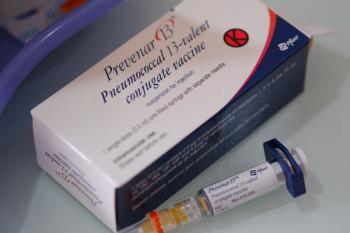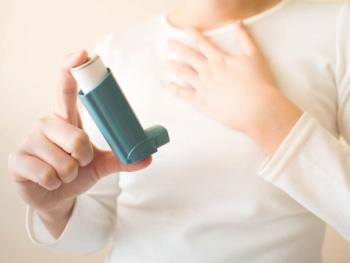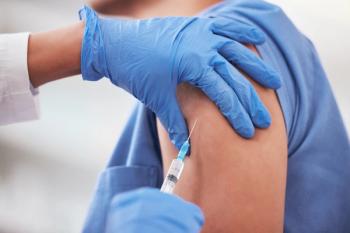
Thermometers: A Review
Pharmacists must be familiar with the different thermometers so they can ensure proper use by the consumer.
Since the onset of the COVID-19 pandemic, emphasis has been placed on monitoring health status, screening for disease states, and ensuring that the general public is not exposed to the virus and/or exhibiting signs and symptoms of COVID-19. One of the methods used to detect illness and prevent the spread of the disease is monitoring for fever with the use of thermometers. According to IRI, a Chicago-based market research firm, the sale of personal thermometers increased by 297% during the 4-week period ending March 22, 2020, compared to the same time period 1 year earlier.1 Since COVID-19 remains a public concern, it is important for pharmacists to be familiar with the various types of thermometers available on the market and to provide proper guidance on their use.
Normal Body Temperature
The body maintains a state of homeostasis regulated by the hypothalamic thermoregulatory center. The center balances excess heat production from metabolic activity in the muscle and liver by allowing heat to be released from the skin and lungs to maintain a mean oral temperature of 36.8o C + 0.4o C (98.2o F + 0.7o F). Fluctuations in body temperature occur throughout the day, with temperature being lower in the morning and higher in the evening.2 Furthermore, the temperature considered to be fever differs based on the measurement site (Table).
Body Site
Body Temperature Range
Classification of Fever
Axillary
94.5-99.3o F (34.7-37.4o C)
>99.3o F (37.4o C)
Oral
95.9-99.5o F (35.5-37.5o C)
>99.5o F (37.5o C)
Rectal
97.9-100.4o F (36.6-38.0oC)
>100.4oF (38.0o C)
Temporal
97.9-100.1o F (36.6-37.8oC)
0 to 2 months of age: >100.7oF (38.1oC)
3-47 months of age: >100.3oF (37.9oC)
>4 years of age: >100.1oF (37.8oC)
Tympanic
96.3-100.0o F (35.7-37.8oC)
>100.0o F (37.8o C)
Considerations When Selecting a Thermometer
Various thermometers are available on the US market. When selecting a thermometer, identifying one that will provide an accurate reading is most important. Since the FDA regulates thermometers as medical devices, all approved thermometers are considered accurate and reliable, when used appropriately.3 To do so, considerations must be given to the ease of use, which may be a function of the site of temperature measurement. Thus, consideration should be given to the versatility afforded by certain thermometers, allowing for measurements to be obtained in more than one body site. The following is a discussion of various types of thermometers.
Rectal Thermometers
Rectal thermometers have been generally accepted as the “gold standard” for measuring temperature in very young children; however, some caregivers refrain from using them due to their intrusive nature and associated risks. These risks may include the development of peritonitis, rectal or intestinal perforation, and retaining of the thermometer inside the rectum.3 Rectal temperature measurements should not be taken in patients with obstructive hemorrhoids or diarrhea, as well as in patients with neutropenia due to their increased susceptibility to infection. Other considerations when measuring rectal temperature are that it is cumbersome and time consuming and that rapid changes in body temperature may not be detected due to the large muscle mass and poor blood flow to the rectal area.3 Notably, rectal temperatures tend to run higher than oral temperatures.
Oral Thermometers
Oral thermometers are commonly used in medical offices and within households. However, to obtain accurate readings, certain factors must be kept in mind. For instance, oral temperature readings should be obtained at least 20 to 30 minutes after drinking and/or eating and should not be taken in patients who have a difficult time keeping the thermometer under their tongue and/or difficulty creating a tight seal around the thermometer.3 For younger patients who may struggle with these issues, pacifier thermometers are an alternative option to measure temperature. To obtain a proper reading with a pacifier thermometer, patients should wait 30 minutes after eating or drinking and should hold the pacifier in their mouth without moving it for 2 to 6 minutes.3 Lastly, oral temperatures should not be obtained in patients who are hyperventilating, uncooperative, lethargic, confused, and/or those who have had recent oral surgery.3
Tympanic Thermometers
Tympanic thermometers are usually used in pediatric offices to take the temperature via the ear. These provide a relatively quick and accurate measurement because the ear is close to the hypothalamus which allows for an accurate reading of core body temperature.3 However, proper positioning of the thermometer is extremely important to ensure an accurate reading. Other factors such as inflammation of the ear canal, age (children younger than 6 months do not have fully developed ear canals), and earwax buildup may also affect temperature readings.3 Additionally, cold or hot weather can affect temperature readings so it is recommended to wait at least 15 minutes after being exposed to extreme temperatures before using the thermometer.4 Proper technique requires the user to pull the ear backward to help straighten the ear canal and to aim the tip of the probe towards the patient's eye on the opposite side of his or her head.3
Temporal Touch Thermometers
Temporal touch thermometers use an infrared scanner to scan the temporal artery in the forehead. This task is completed by placing the thermometer on 1 side of the forehead and then moving it across the forehead; the process usually takes a few seconds. This method of measuring temperature can be very sensitive in detecting fever but the scanner needs to be in contact with the skin at all times. Overall, this method provides an easy and accurate temperature reading in most patients.3 Yet, one must keep in mind that direct sunlight, cold temperature, sweaty forehead, and poor technique can impact the accuracy of the reading.5
Noncontact Temporal Thermometers
Noncontact temporal thermometers also use infrared technology but these do not require direct contact with the skin. Thermometers are generally held between 1.2 and 6 inches from the skin.6 Using a forehead noncontact infrared thermometer is quick, convenient, noninvasive, and carries a low risk of disease transmission. Studies suggest that taking temperature immediately after coming in from the cold underestimates body temperatures and as such, infrared temporal thermometers are not ideal for screening for diseases during cold weather.7 To ensure accuracy, measurements should be taken at least 10 minutes after coming in from the cold.8 These thermometers should also be used in environments free from secondary infrared sources, such as direct sunlight and incandescent lamps.7
Axillary Thermometers
Axillary temperatures usually run lower than oral temperatures. Compared with the rectal and oral methods of measuring temperature, axillary thermometers are less reliable at detecting fevers.3 Although they may be favored because of their ease of use and noninvasive nature, their use should be discouraged because of concerns with accuracy.3 When used, temperatures should not be taken directly after vigorous activity or bathing since these can alter body temperature.3
Basal (Ovulation) Thermometers
Basal thermometers are used to monitor basal body temperature for the purpose of tracking ovulation in women who are trying to conceive or prevent pregnancy.9 The digital basal thermometers have smaller gradations than regular thermometers (0.1 degree vs 0.2 degree), enabling them to detect small changes in body temperatures. This is important since the temperature increase that follows ovulation is small (approximately 0.4 to 1.0o F or 0.2 to 0.6o C).9 Temperature can be taken orally, rectally, or vaginally; however, the same site must be used each day. Temperature must also be taken at approximately the same time each morning before rising, after at least 3 hours of sleep.10
Color Change Thermometers
Color change thermometers usually involve placing a strip on the forehead, which changes color according to the heat radiating from the body. These thermometers are easy to use, provide a quick reading, and are sometimes reusable. However, they can be inaccurate as they do not reliably detect changes in the core temperature but only changes in skin temperature.3
Glass Thermometers vs Digital Thermometers
Two types of glass thermometers are available, one with mercury and the other without it. Mercury-containing thermometers are no longer recommended due to toxic effects and may be banned in some states.11 Notably, though, individuals may still have access to these thermometers at home. Before taking measurements, it is important to ensure that the thermometer’s mercury is at the bottom of the measurement column. If this is not the case, the thermometer should be flicked to bring down the mercury in the column. Mercury-free glass thermometers use a gallium-indium-tin alloy, as a substitute for mercury.12 Glass thermometers differ in their tips. Those that utilize a long, thin tip are indicated for oral and axillary use whereas those with a short, round tip are for rectal use.4
Digital thermometers are commonly used as an alternative to glass thermometers since they are faster, easier to read, and remove the environmental concern of mercury.13 Furthermore, there are no clinically significant differences between the accuracy of glass thermometers and digital thermometers.13 Digital thermometers are portable and can be used to measure oral, axillary, and rectal temperatures.3
Several factors should be considered when selecting a thermometer. Thermometers vary in their mechanisms of measuring temperatures and in their intended uses. Pharmacists must be familiar with the different thermometers so they can ensure proper use by the consumer.
References
1. COVID-19 and the Economy: Tacking the Dramatic Pivot of U.S. Consumer and Shopper Behavior. IRI Worldwide. Published April 3, 2020. Accessed May 12, 2021. https://www.iriworldwide.com/iri/media/library/covid-19-thought-leadership-4-3-2020.pdf
2. Dinarello CA, Porat R. Fever. In: Jameson JL, Fauci AS, Kasper DL, Hauser SL, Longo DL, Loscalzo J, eds. Harrison’s Principles of Internal Medicine, 20th ed. McGraw Hill: 2020. Accessed March 16, 2021.
3. Lemay V, Feret BM. Fever. In: Krinsky DL, ed. Handbook of Nonprescription Drugs: An Interactive Approach to Self-Care. 19th ed. APhA Publications; 2018:97-110.
4. Temperature: Digital and Glass Thermometers. Nationwide Children’s. Updated February 2017. Accessed March 24, 2021. https://www.nationwidechildrens.org/family-resources-education/health-wellness-and-safety-resources/helping-hands/temperature-digital-and-glass-thermometers
5. Thermometers: Understanding the Options. Mayo Clinic. Updated November 17, 2020. Accessed March 25, 2021. https://www.mayoclinic.org/diseases-conditions/fever/in-depth/thermometers/art-20046737
6. Non-Contact Temperature Measurement Devices: Considerations for use in Port of Entry Screening Activities. Centers for Disease Control and Prevention. Published August 22, 2014. Accessed March 19, 2021. https://stacks.cdc.gov/view/cdc/24857/cdc_24857_DS1.pdf
7. Dzien C, Halder W, Winner H, Lechleitner M. COVID-19 screening: are forehead temperature measurements during cold outdoor temperatures really helpful? Wein Klin Wochenschr. 2021;133(7-8):331-335. doi: 10.1007/s00508-020-01754-2.
8. Erenberk U, Torun E, Ozkaya E, Uzuner S, Demir AD, Dundaroz R. Skin temperature measurement using an infrared thermometer on patients who have been exposed to cold. Pediatr Int. 2013;55(6):767-770. doi: 10.1111/ped.12188
9. Briggs GC. Home Testing and Monitoring Devices. In: Krinsky DL, ed. Handbook of Nonprescription Drugs: An Interactive Approach to Self-Care. 19th ed. APhA Publications; 2018:899-922.
10. Basal Body Temperature for Natural Family Planning. Mayo Clinic. Updated March 3, 2021 Accessed May 26, 2021. https://www.mayoclinic.org/tests-procedures/basal-body-temperature/about/pac-20393026
11. Mercury Thermometers. US Environmental Protection Agency. Updated March 30, 2021. Accessed June 9, 2021.
12. Baura G. Thermometers. In: Baura G, ed. Medical Device Technologies: A System Based Overview Using Engineering Standards. 2nd ed. Academic Press; 2020; doi: 10.1016/B978-0-12-811984-6.00012-X
13. Hardu G, Murugan R. Is there a significant difference between digital and glass mercury thermometers? Adv Nurs.2016;2:1-10.doi:
Newsletter
Pharmacy practice is always changing. Stay ahead of the curve with the Drug Topics newsletter and get the latest drug information, industry trends, and patient care tips.




























































































































